What was meant to be a peaceful and dignified march by South African artists, creatives, and cultural workers turned into yet another moment of tension as a heavy police and private security presence greeted protestors at the Department of Sport, Arts, and Culture’s headquarters in Pretoria.
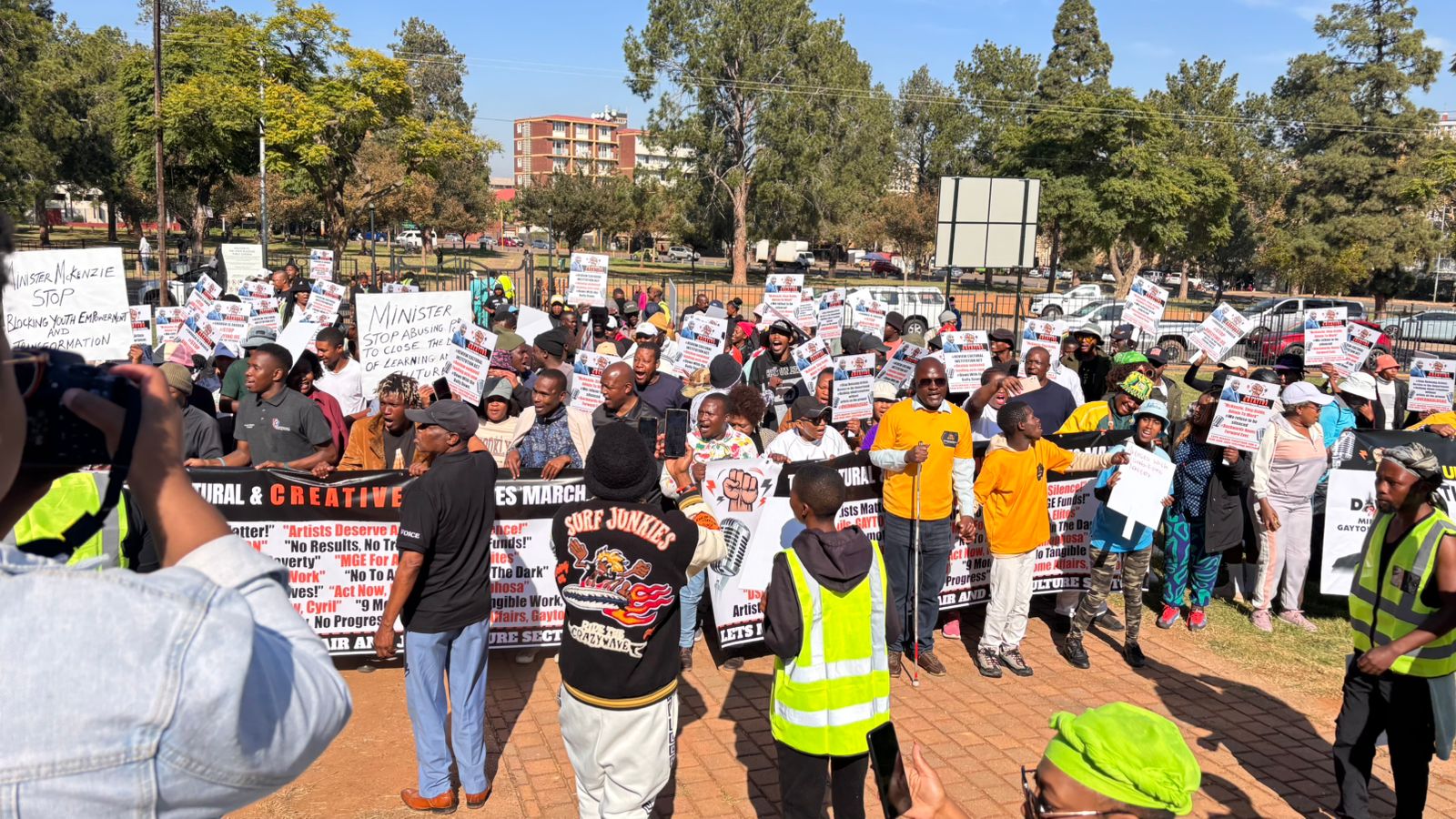
Marching from the Union Buildings to the Department’s offices, hundreds of artists came together in solidarity under the banner of MGE Concerned Artists, demanding real transformation, transparency, and sustainable support for the creative sector. But instead of open doors and dialogue, they were met with barricades, armed officers, and a wall of silence.
“Why is it that every time artists raise concerns, we’re treated like criminals?” asked one protestor. “This is a peaceful march. We’re here asking for answers, not causing chaos — but every time, the government responds to our pain with police.”
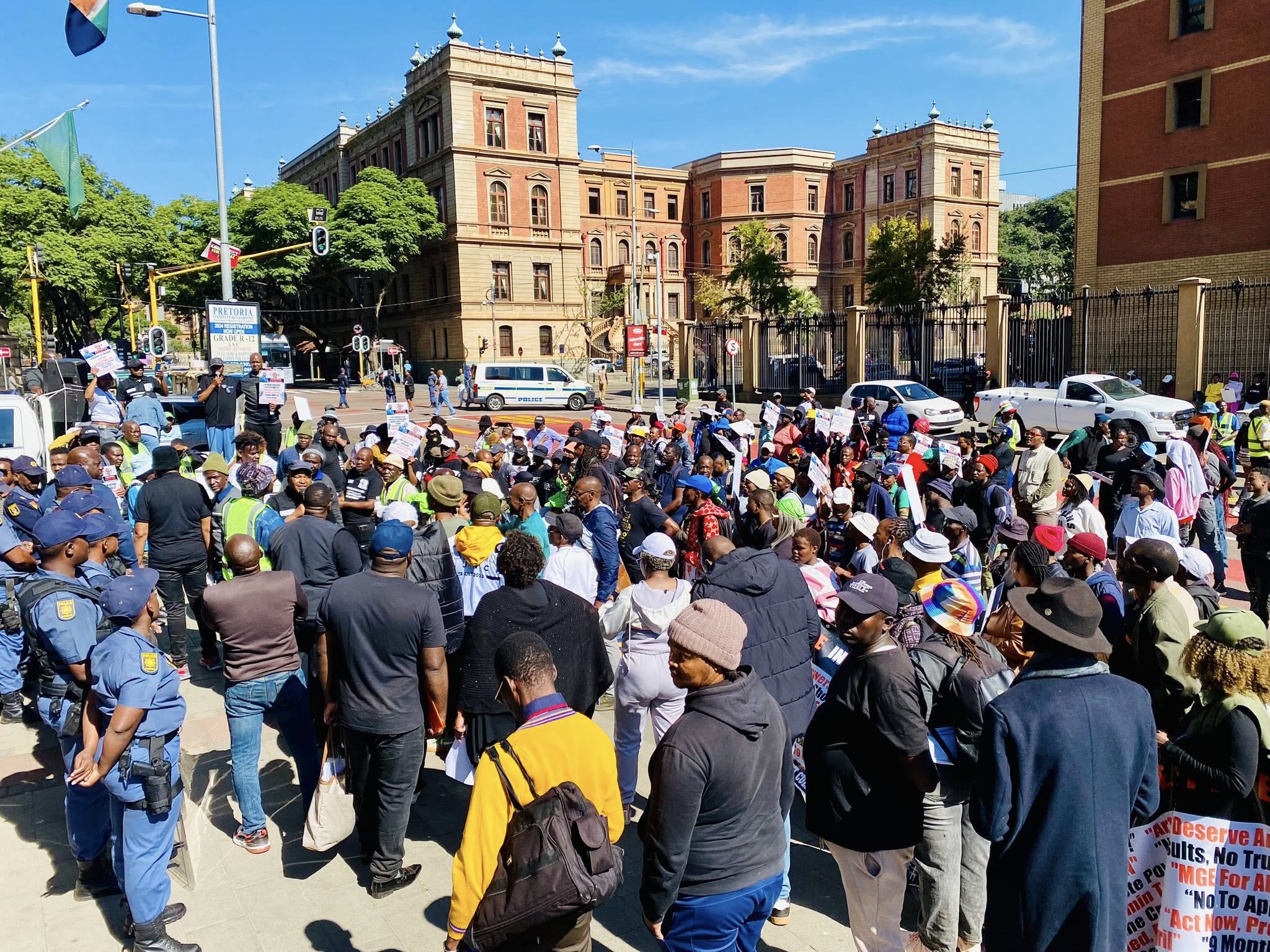
The march was organised to question the government about several urgent matters, including:
- The Mzansi Golden Economy (MGE) funding pending results.
- The exclusion of certain organisations and independent artists from funding opportunities.
- Broader issues affecting the arts and culture fraternity, including infrastructure, sector investment, and sustainable development.
At the Union Buildings, the protesting artists and cultural practitioners managed to engage with an official from the President’s Office, who came out to meet the delegation and received and signed their memorandum of demands — a move many saw as a respectful and encouraging gesture. However, the mood soured upon arrival at the Department of Sport, Arts, and Culture. Artists were met by the Department’s Deputy Director-General (DDG) of Sports, who had been sent to receive their memorandum. The artists and their leadership refused to hand it over, insisting that it be received by someone within the Arts and Culture sector, as it directly affected their community.
The absence of the designated Minister Gayton McKenzie, Deputy Minister Peace Mabe, and Director-General Dr. Khumalo only deepened the sense of betrayal felt by the artists. “How can you send us the DDG of Sports when our sector is the one in crisis? This is exactly why we’re here — to challenge the disrespect, the silence, and the disregard for the artists who carry the soul of this nation,” said one protest leader.
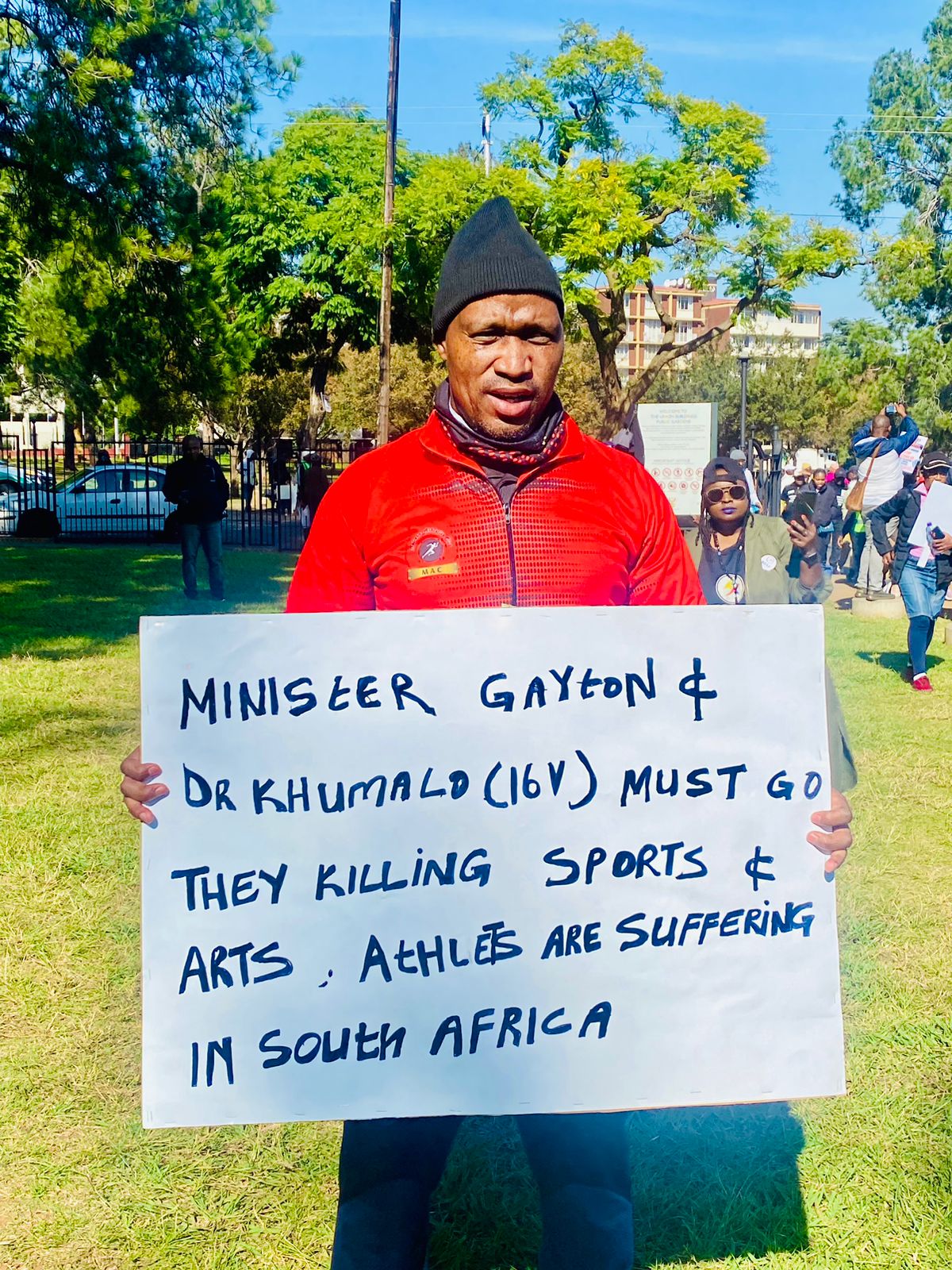
At the heart of the protest was a bold and unapologetic message: “Awards without development, infrastructure, and funding are empty gestures.” Artists questioned how new awards programmes can be launched when the very people meant to be celebrated remain unemployed, underfunded, and excluded from life-changing opportunities.
- Among their key demands:Transparent disbursement of MGE funding.
- Inclusion of grassroots, independent, and community-based initiatives.
- Infrastructure investment and long-term sustainability plans for the creative sector.
- An end to the over-policing of peaceful artist protests.
Yesterday’s march wasn’t about disruption — it was about dignity, justice, and being heard. From poets to painters, musicians to theatre-makers, South Africa’s creative sector stood as one, declaring that enough is enough. As chants of “Nothing about us without us” filled the Pretoria streets, it became clear: this wasn’t just about MGE funding. It was about respect, human dignity, and securing the rightful place of artists in the heart of the nation’s social and economic fabric.
The Department of Sport, Arts, and Culture had not issued an official statement by the time of publication.
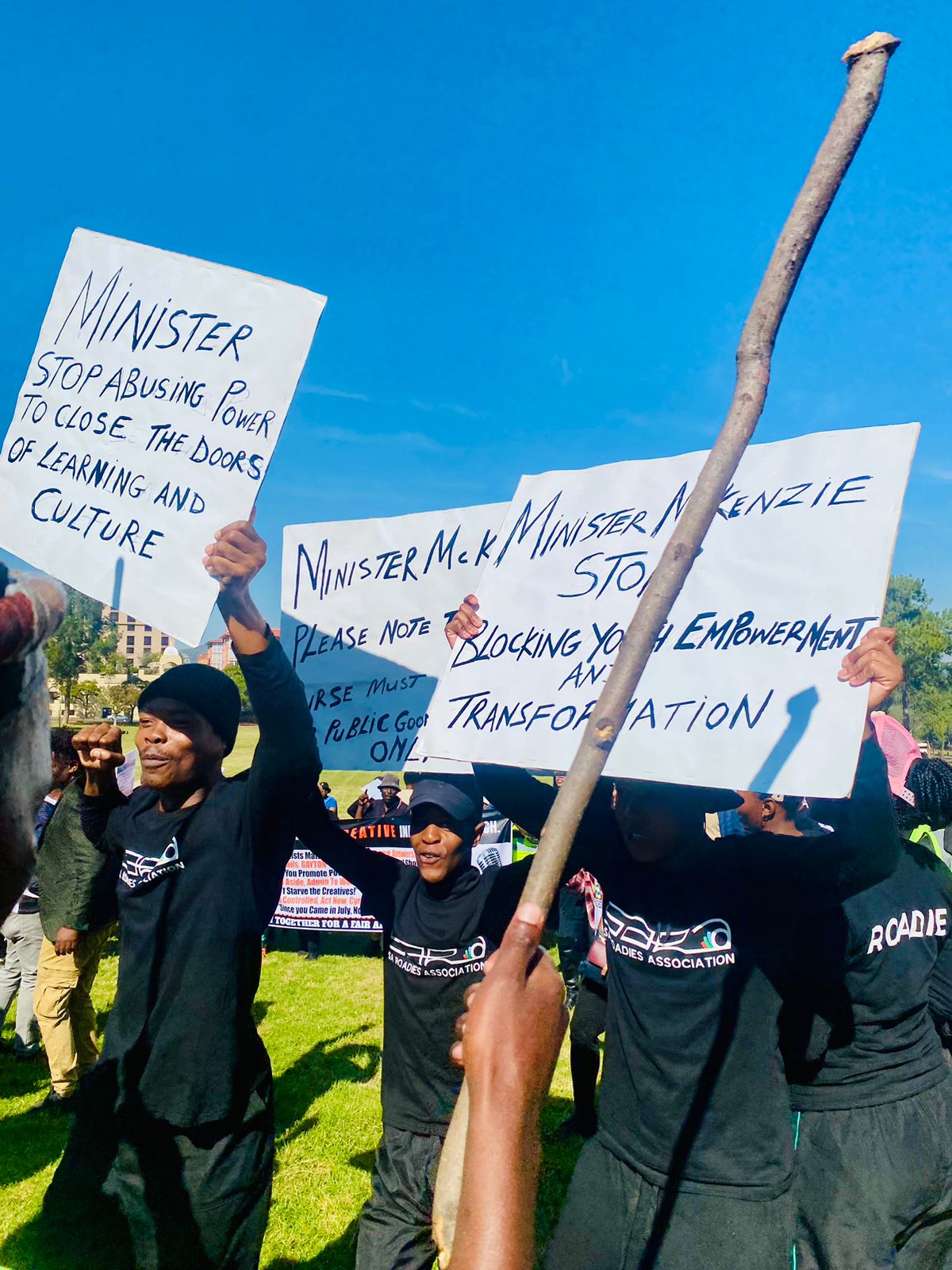
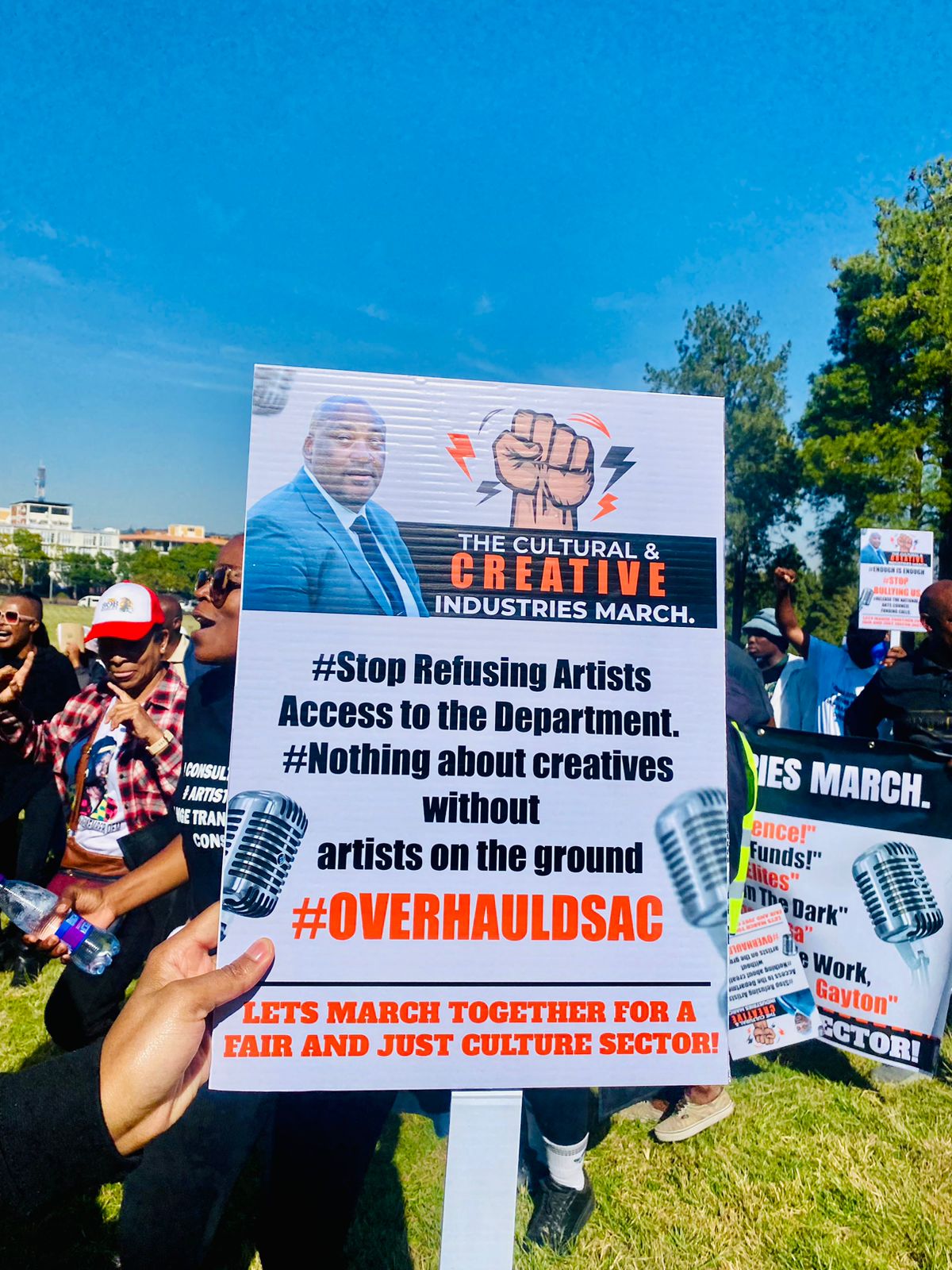
We will fight for the rights of the artists until the department take arts serious